This dress display includes the two main parts of a ceremonial dress: the apron and the skirt. Below are photos of the dresses, with close ups of the intricate detailing on the dresses and historical photos of women wearing the dresses. These dresses and aprons were worn during a variety of ceremonies held by local tribes and dresses like these are still used in ceremonies today.
ApronsThe apron was worn in the front while the skirt wrapped around the back. Photos from the early 1900s often show them being worn backwards to highlight the details on the back of the dresses. Ceremonial outfits include a variety of pieces that are made up of materials including dentalium, seed, and bead necklaces, hair ties, basketry caps, and sometimes sashes with woodpecker scalps. The aprons vary in design and materials with some aprons being very plain to others being very elaborate. Two examples of aprons are on display, one is a plain but detailed deerskin apron while the other is made up of hundreds of strands of blue trade beads with bells and beargrass. |
Deerskin Apron
Trade Bead and Bell Apron
Skirts
The skirt goes over the apron and wraps around the back of the wearer. The skirt usually features a large amount of decorative detailing made up of both naturally made and worked materials or traded materials. In many early 1900s photos of skirts being worn by locals, photographers had their subjects reverse the dress so the elaborate detailing could be more easily seen. An example of one of these photos, by A.W Ericson, is on the right. The photo on the left is of a contestant in Hoopa's Miss Indian Princess pageant in the 1950s. You can see between the two photos the difference in how the skirt is worn, with the apron being visible on the left under the skirt (which ends near the model's left hand) while no apron is visible in the photo on the right. The photo below these two portraits is of a group of Wiyot girls in ceremonial dress from a 2004 edition of the Times Standard. It is another great representation of how skirts and aprons would be worn together to complete the dress.
Hair Ties | |
| Hair ties like these are typically worn as part of dance regalia. They also feature a mix of traded and naturally found materials, with blue and gold beads and pine nuts. When danced, the sounds of the shells, seeds, nuts and beads on the regalia add to the music being played and sung in the ceremonies. |

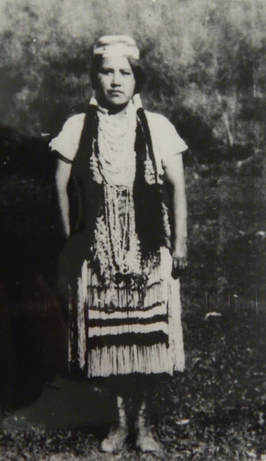

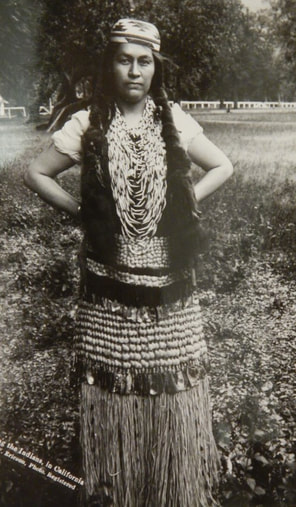
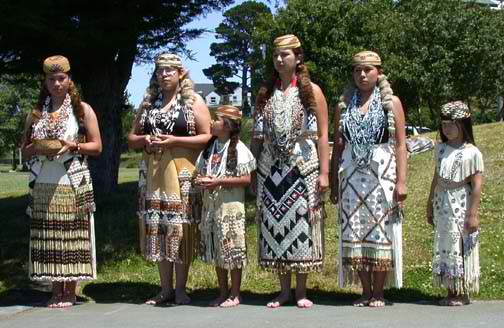
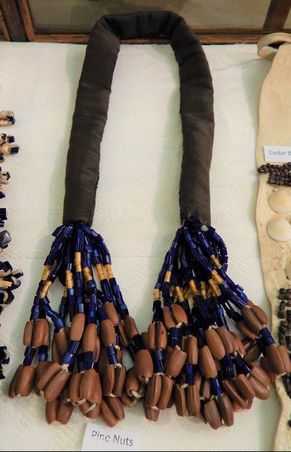
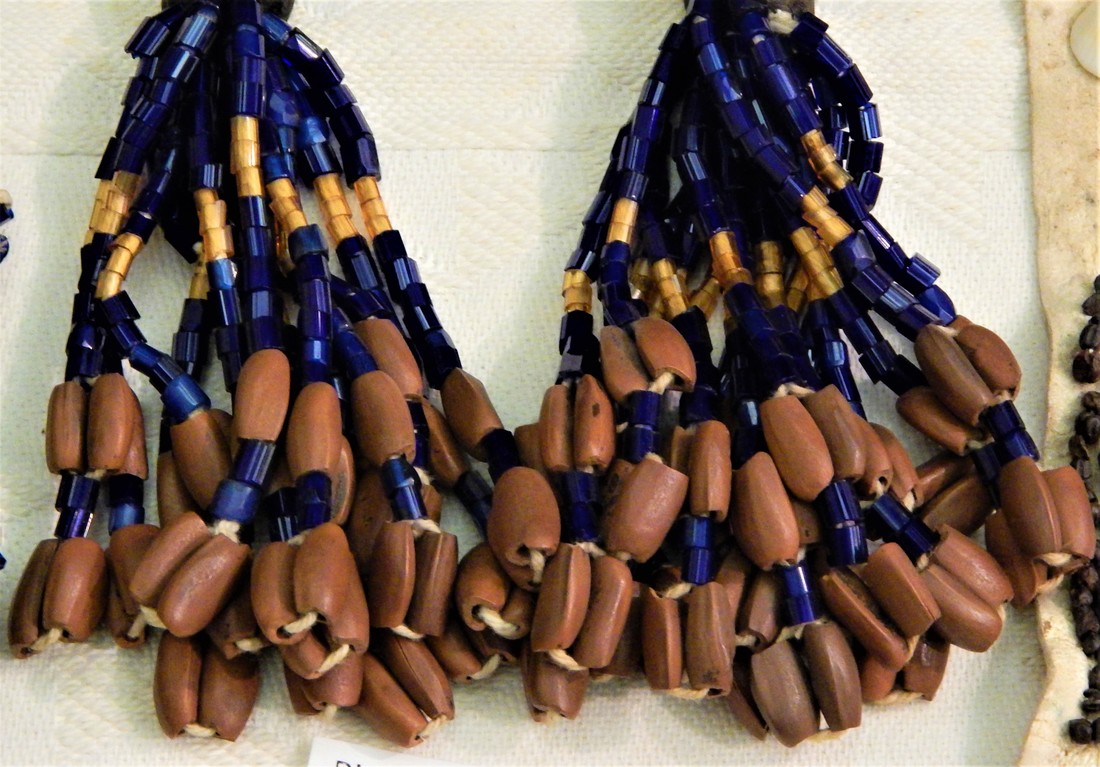
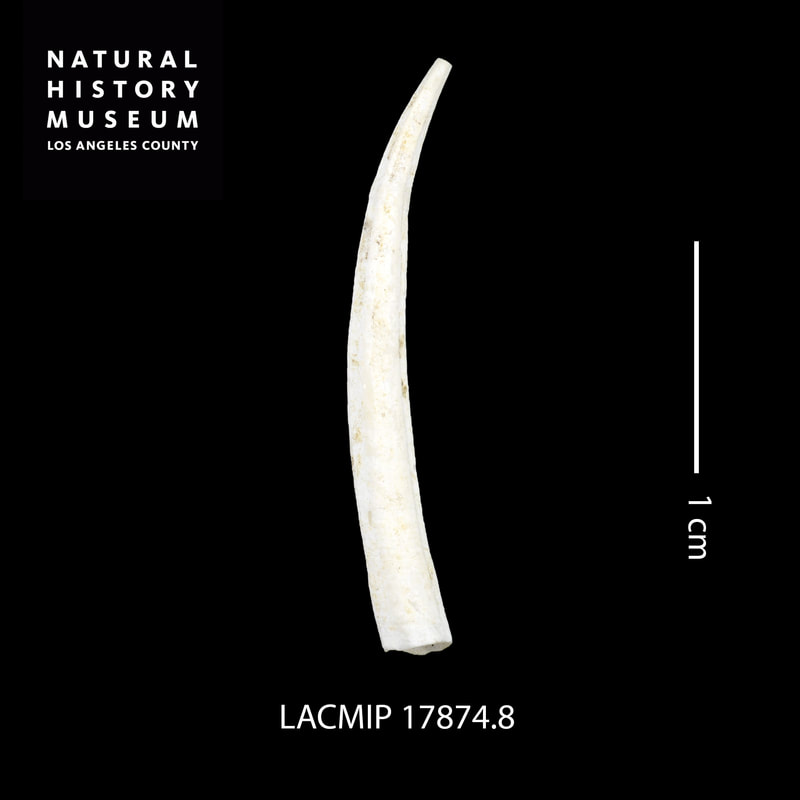
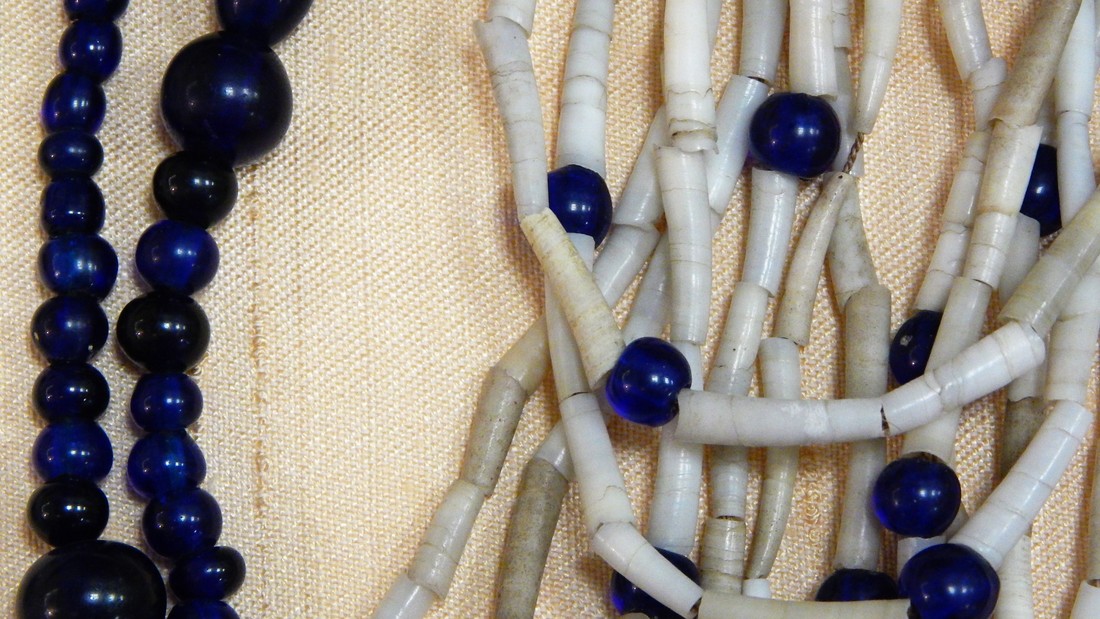
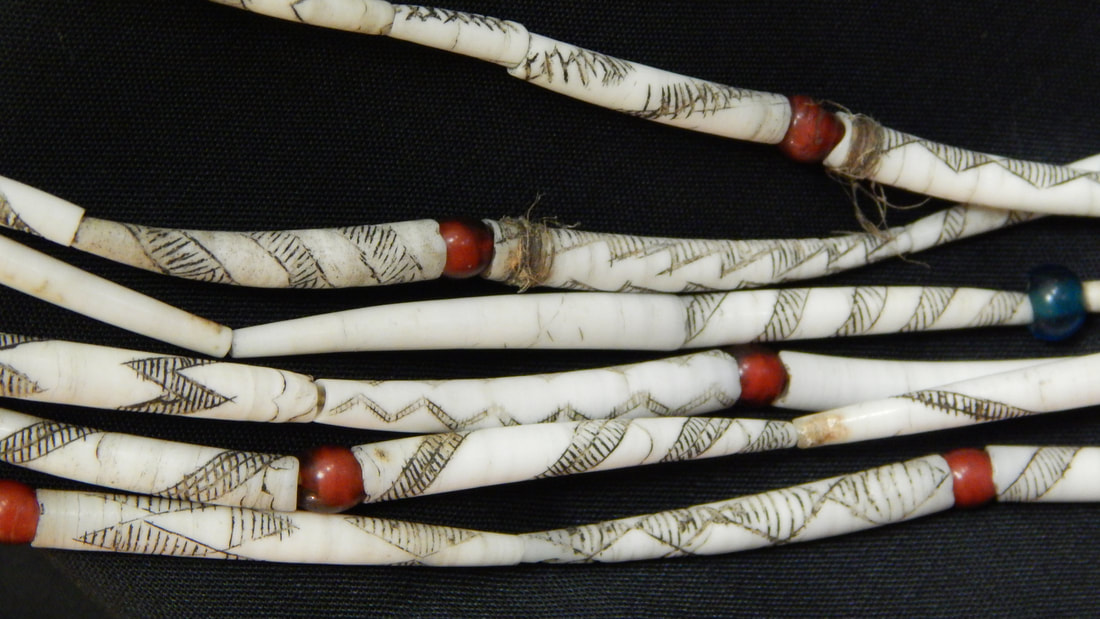
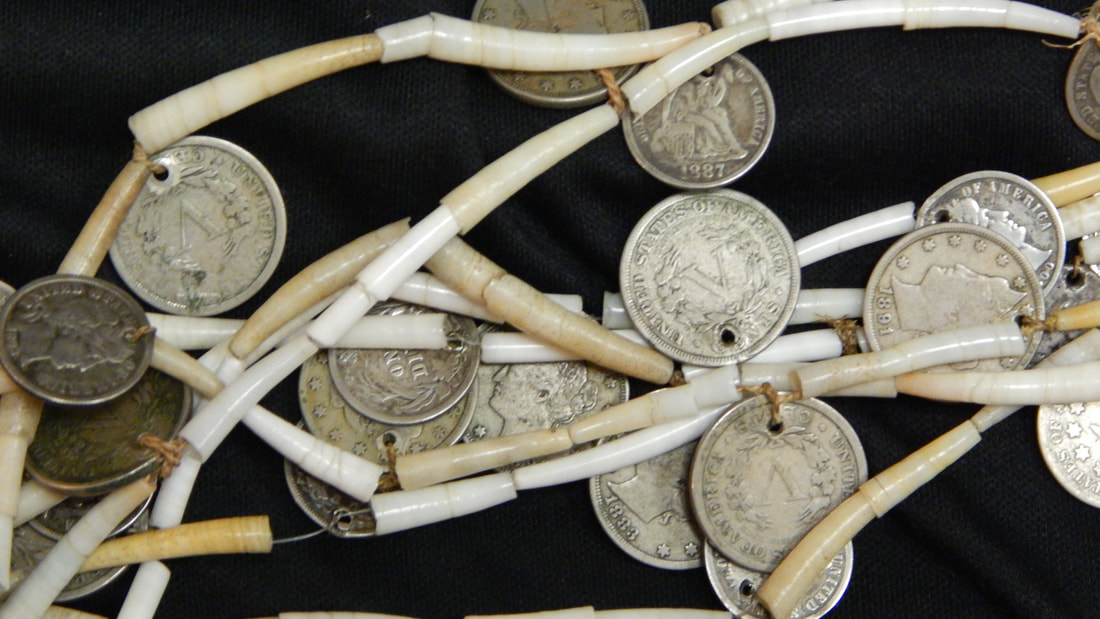
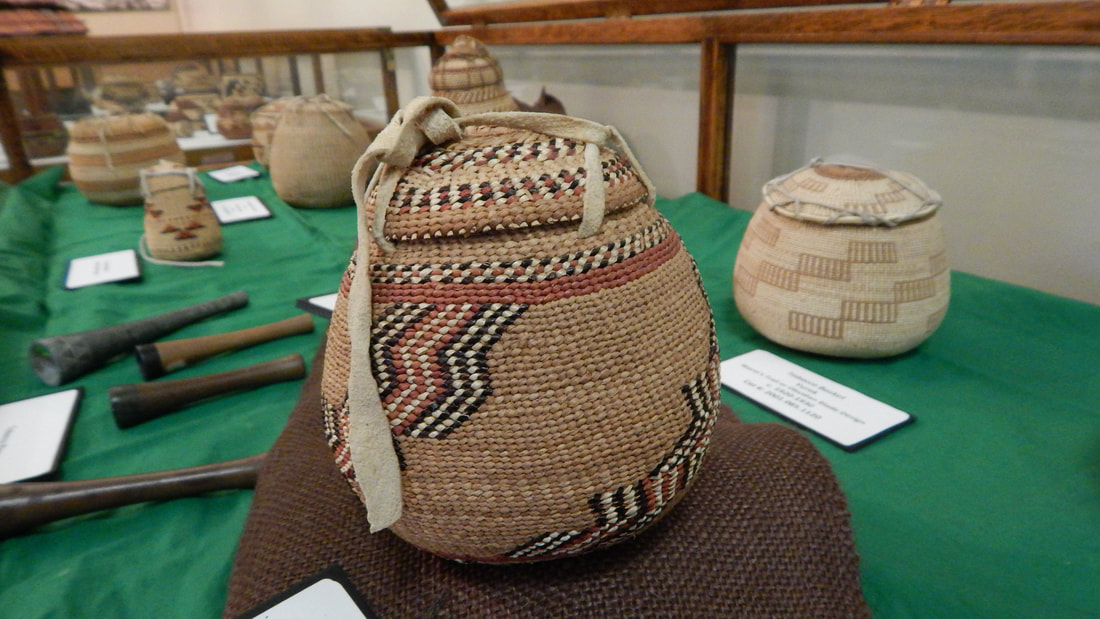
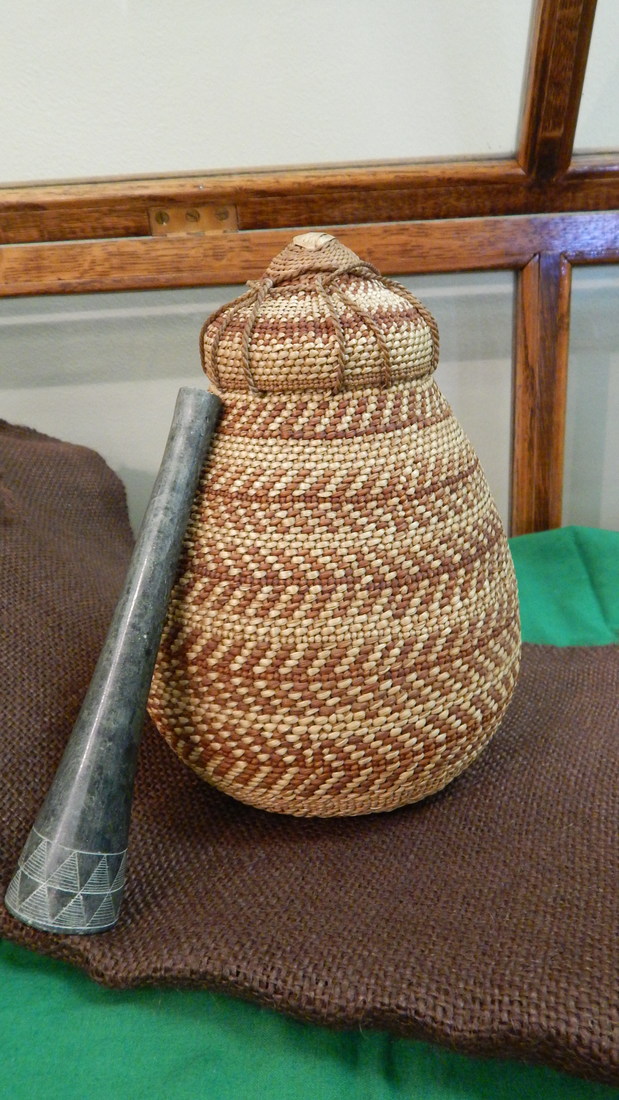
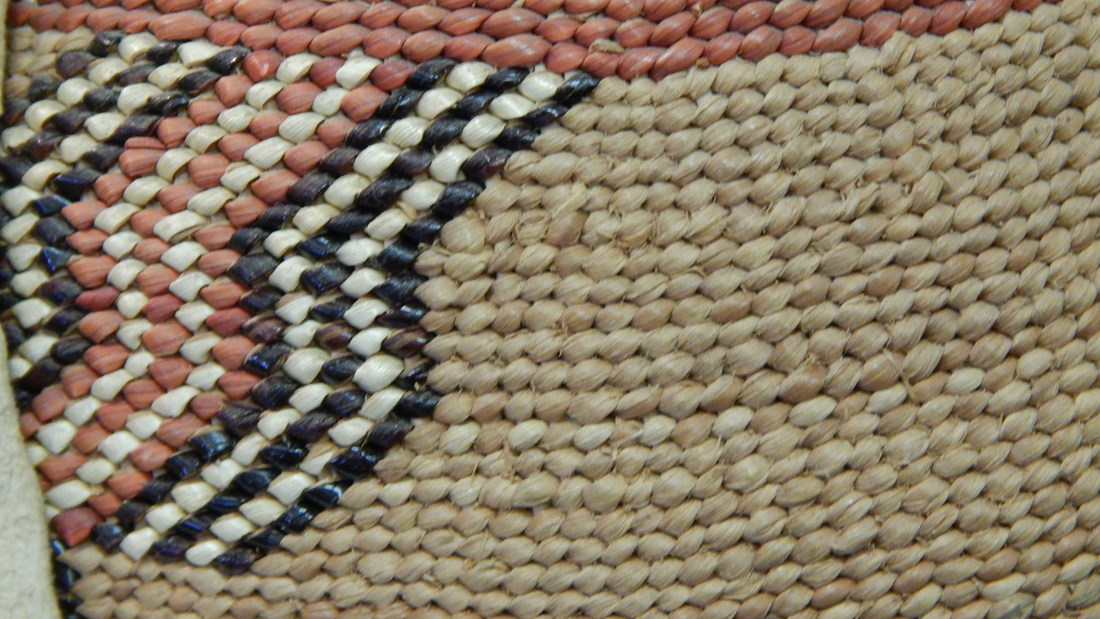
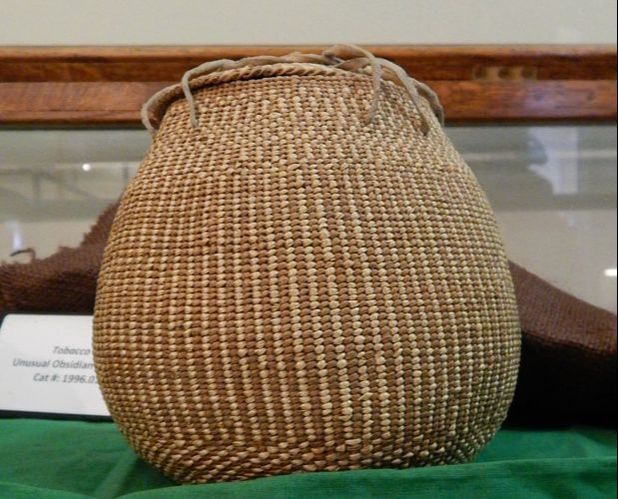
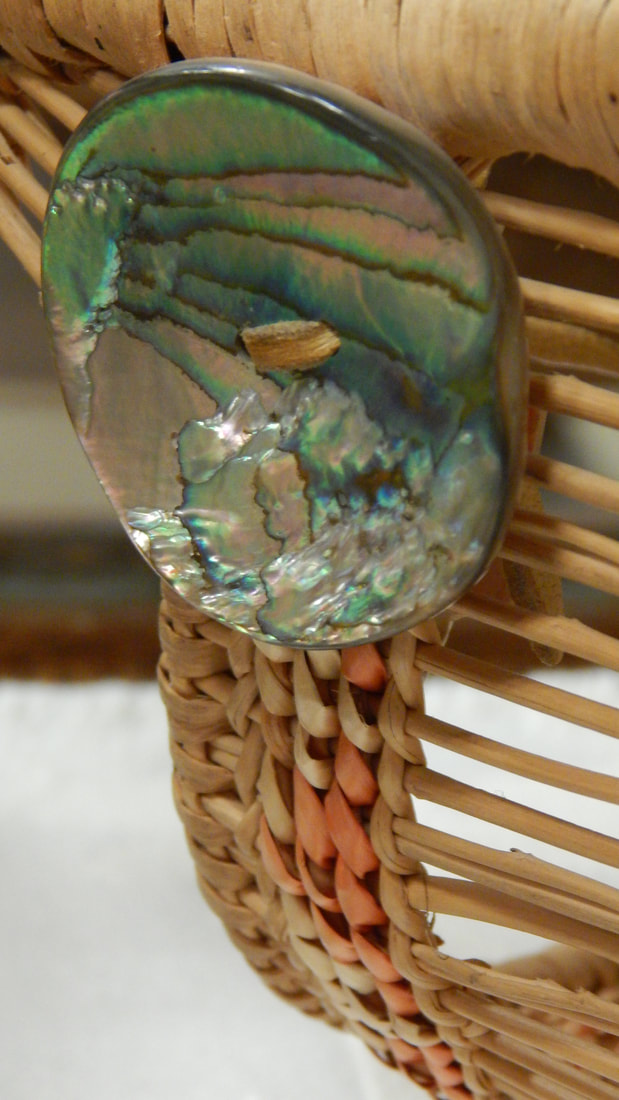
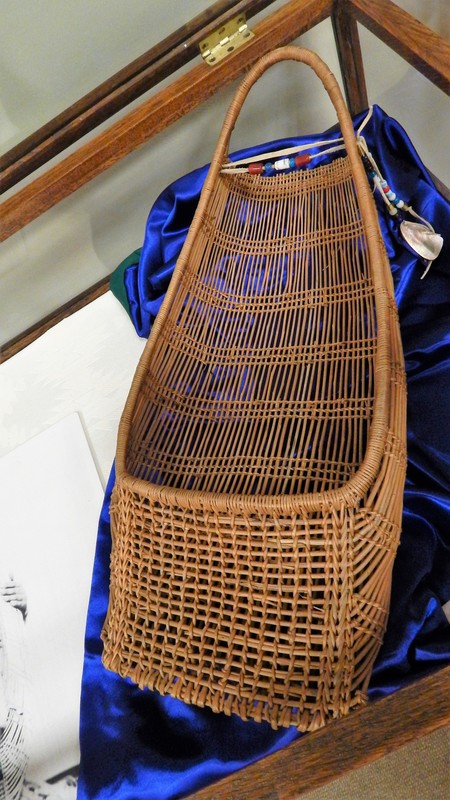
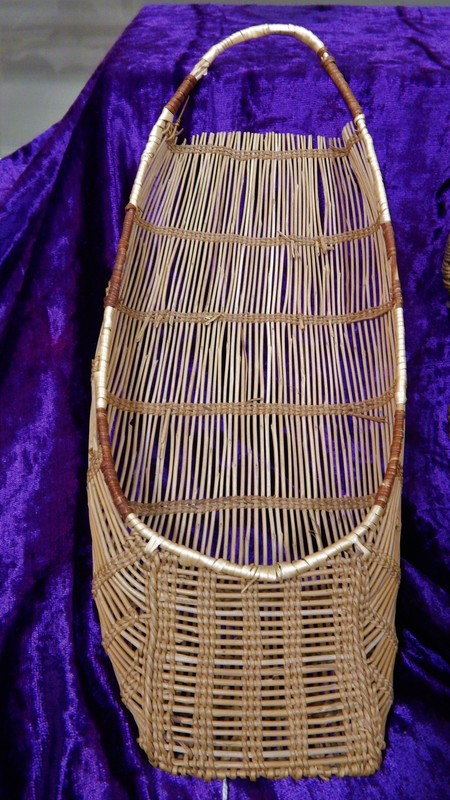
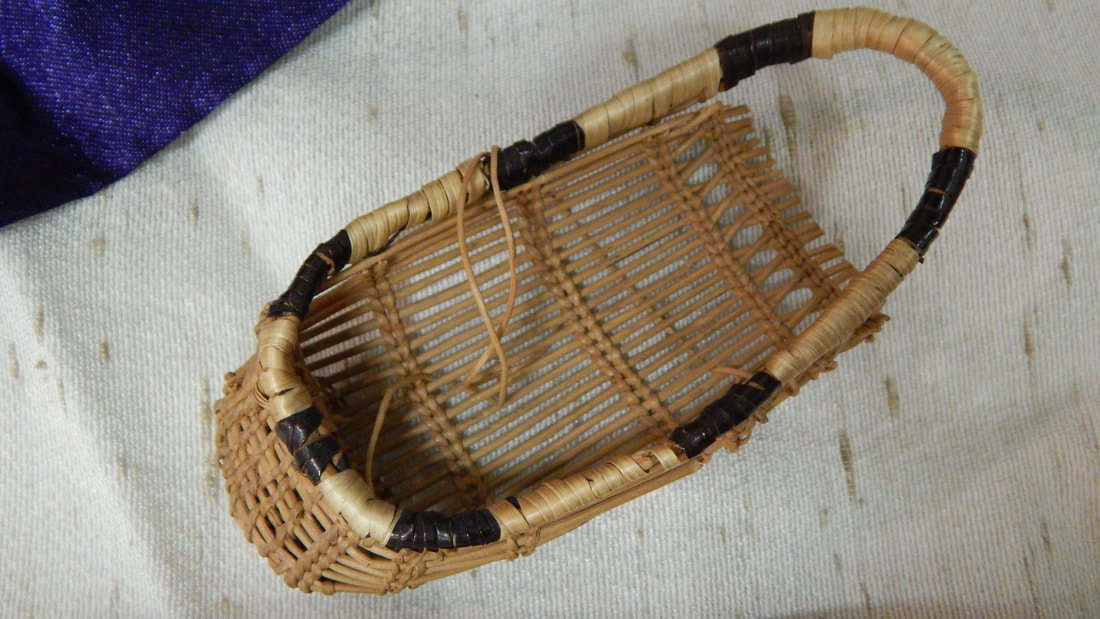
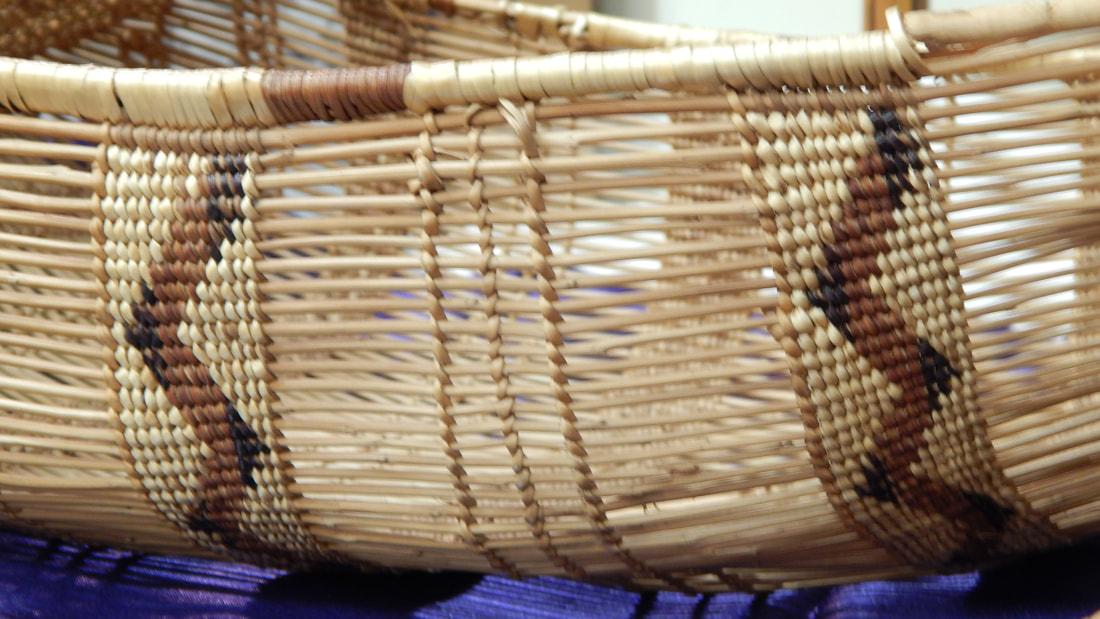
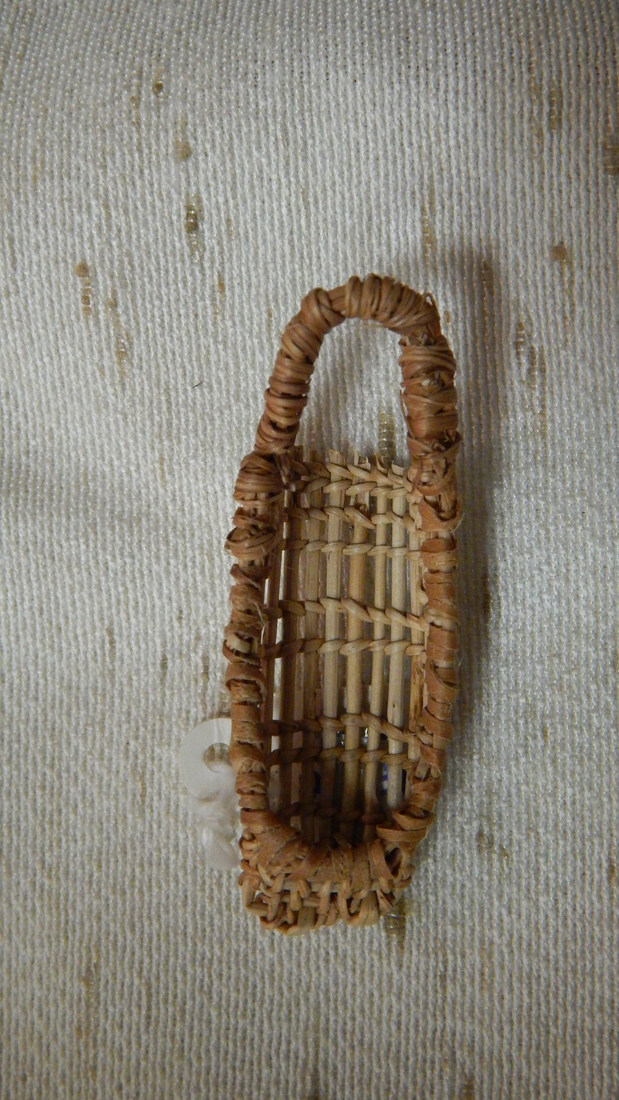
 RSS Feed
RSS Feed